An electromagnetic pulse (EMP) is a wave of energy commonly released by a nuclear detonation that can fry the internal circuitry of most commercial electronics. The easiest way to protect your devices from such a pulse is to construct a simple Faraday cage. This device, invented by Michael Faraday, creates a sort of conductive shield around whatever is stored inside. The shield redirects the flow of the electromagnetic pulse, limiting or preventing it from causing any damage. You can build a Faraday cage out of common household items.
StepsMethod 1Method 1 of 3:Converting a Shoe Box Using Aluminum Foil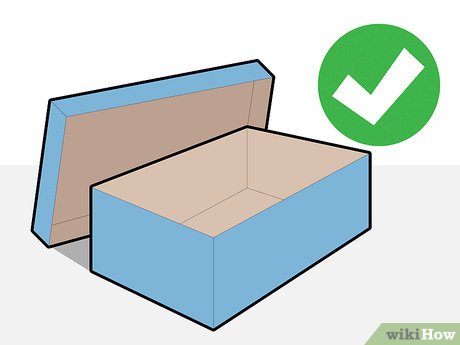
1Pick a shoe box with a lid. Look for a shoe box that is sturdy and dry as well. The cardboard needs to be intact to serve as the structure you’ll adhere the aluminum foil to. While you can use other kinds of boxes, it’s important to have a lid; so shoe boxes are often your best option.XIf you use a regular box, you will need to leave it sealed shut until after a potential EMP goes off.You can remove the lid of a shoe box to access electronics stored inside quickly.
2Measure the dimensions of the box. You need to cover as much of the box with uninterrupted foil as you possibly can. Measuring the box ahead of time will make this easier. First measure the length of the box, then measure the height. Multiply the height times 2 and then add it to the length. Then add 1 inch (2.5 cm) to determine how long a piece of foil you’ll need to lay down for your first layer.XYou can measure the box using inches or centimeters, just make sure you use the same unit of measurement consistently throughout the project.As an example, a box that is 10 inches (25 cm) long and 4 inches (10 cm) high would look like this: 4 inches (10 cm) x 2 = 8 inches (20 cm). 8 inches (20 cm) + 10 inches (25 cm) = 18 inches (46 cm). Then add the extra 1 inch (2.5 cm) for a total of 19 inches (48 cm).The extra 1 inch (2.5 cm) of foil will allow you to fold it over the top edges of the box.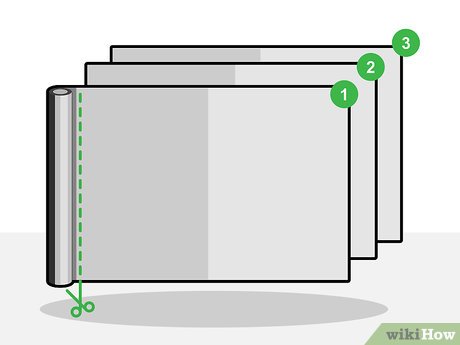
3Cut 3 pieces of aluminum foil based on your measurements. Stretch the foil out from the roll until it measures the length you determined in the previous step. Then use a razor blade or the teeth on the aluminum foil’s box to cut it off there. Then repeat that process two more times so you have 3 equal length pieces of aluminum foil.XUsing the previous example; you’d need to cut 3 pieces of foil that each measure 19 inches (48 cm).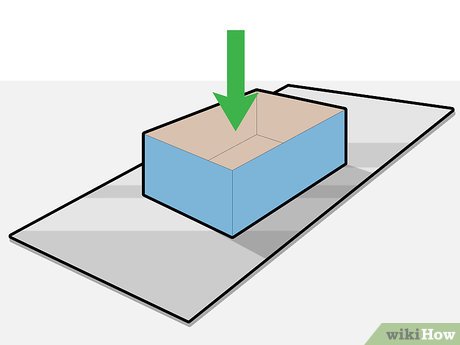
4Center the shoe box on the first sheet of aluminum foil. The sheet of aluminum foil on your table will be shaped like a rectangle, with two longer sides and two shorter ones. Orient the box on the sheet so that its shape matches that of the foil, with the longer sides of the box running parallel to the longer sides of the foil.The placement of the box does not need to be exact.Do not put the lid on the shoe box yet.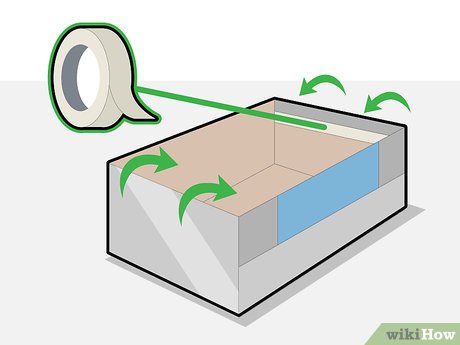
5Wrap the foil around the box and tape it in place. The foil should extend beyond the top of the box by about .5 inches (1.3 cm) on either side thanks to the 1 inch (2.5 cm) addition you made to your measurement. Fold that excess foil over into the box and then tape it in place using scotch tape.Fold excess foil around the exterior of the shoe box.Some of the box will still be visible, but at least the bottom and two shorter sides should be completely covered in aluminum foil.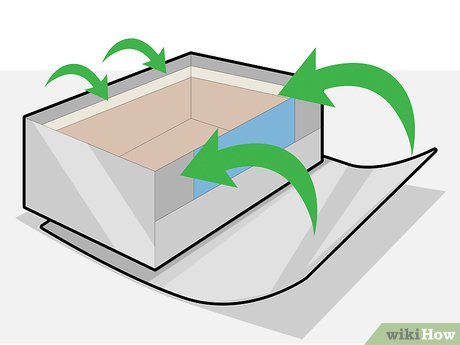
6Fold the other two pieces of foil around the box on either side. Fold about .5 inches (1.3 cm) of foil into the interior of the box on one side and then wrap the sheet around that same side of the box, overlapping the first sheet of foil on the short sides and bottom of the box. Then tape the piece of foil in place. Repeat that process on the other side with the last remaining sheet of foil.The box itself is now completely covered in aluminum foil.Use long strips of tape to ensure all three sheets of foil are in constant and direct contact with one another. There should be no gaps in the foil.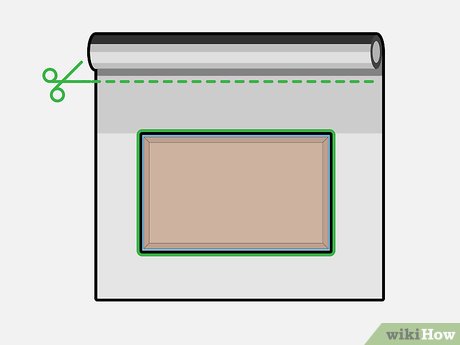
7Use the shoe box lid to measure out another sheet of foil. You’ll be able to wrap the box lid with one sheet of aluminum foil. Stretch the foil out on the table and place the box lid on top of it. With enough foil rolled out to cover the full lid, use a razor blade or the box teeth to cut that sheet of foil off.Be careful not to tear the foil as it won’t have overlapping layers like the rest of the box.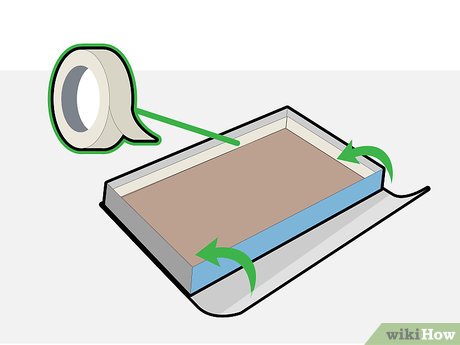
8Secure the foil to the lid using tape. Fold the foil around the shape of the lid so it covers the top and sides completely, then use scotch tape to hold it in place.Fold the foil under the lid so the insides of the lid’s sidewalls are covered in foil as well.You can add more layers of foil if you tear it or the box lid is too large to be covered in a single sheet.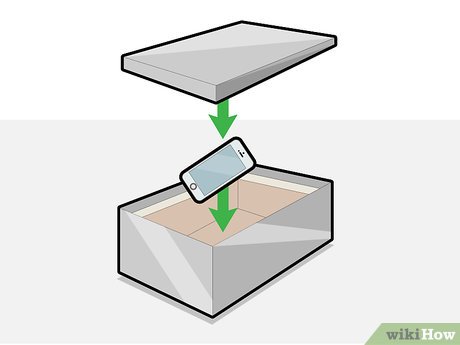
9Place your electronics inside the box and close the lid. The foil from the lid coming into direct contact with the foil from the box will create a barrier that can redirect the energy released by an EMP around the electronics stored inside the box.XMake sure the foil on the interior sidewalls of the lid is making contact with the exterior of the box’s walls.You can seal the box closed with aluminum tape for extra protection.Remember, if you seal the box, you’ll tear the foil when you unseal it.Method 2Method 2 of 3:Using a Bucket
1Purchase a galvanized metal bucket. The bucket will serve as the body of the Faraday cage. Look on the bucket’s label to ensure it is made of galvanized metal. Base the size of the bucket on what you intend to protect inside your Faraday cage. This project is commonly done using a 6 US gal (23 L) bucket.XThe bucket must be made of galvanized metal for the Faraday cage to work. Plastic buckets will not redirect the flow of an EMP.Choose a bucket that has a metal lid.You can purchase a galvanized metal bucket at your local hardware store.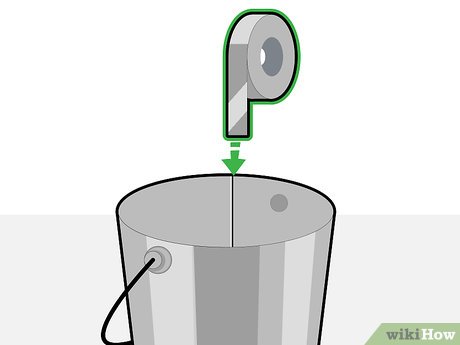
2Line the seams of the bucket with aluminum tape. Although a galvanized metal bucket is watertight, the seam created in the bucket’s construction could provide enough of a gap to allow energy to flow through in the event of an EMP. Mitigate this by applying aluminum tape to the interior of the bucket along the seam where the metal was joined together.XYour Faraday cage may work without lining the seam with aluminum tape. Doing so is an additional precaution to ensure there are no gaps in the protection created by the bucket.You can find aluminum tape at your local hardware store.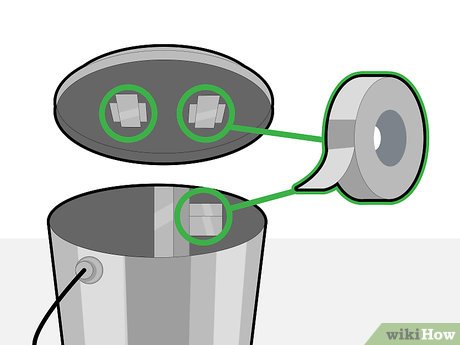
3Add aluminum tape to anywhere handles attach to the bucket or lid. Even a tiny gap in the metal of the bucket or lid could allow for an EMP to damage electronics stored inside your Faraday cage. Mitigate that by adding strips of aluminum tape to the inside of the bucket where the handle passes through, as well as on the underside of the lid where its handle attaches.XThe holes where a handle passes through into the bucket are the most likely areas for a gap that could compromise your Faraday cage.These holes may already be covered by the aluminum tape you used on the bucket’s seam.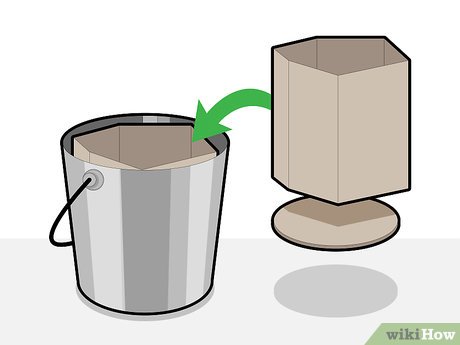
4Line the inside of the bucket with cardboard. Your electronics need to be separated from the exterior metal by an insulating layer. You can purchase a smaller rubber or plastic bucket and simply set it inside the galvanized metal bucket, or you can line the interior of the bucket with cardboard. Use masking tape, rather than aluminum tape, to secure the cardboard in place.XCut a circle of cardboard out and place it on the bottom of the bucket.Slide cardboard into the bucket, so it is standing upright, and wrap it around the interior.When you’re done, the inside walls and the floor of the bucket should be lined in cardboard.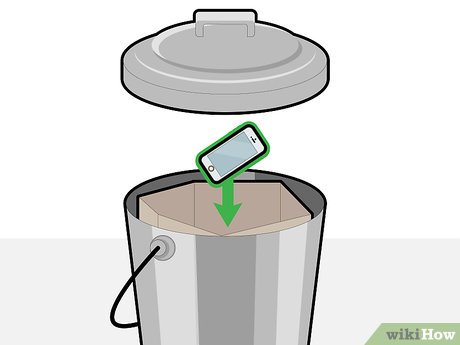
5Insert your electronics. Place your electronics inside the cardboard or bucket you’ve lined the interior of your Faraday cage with. Then place the lid over the top of the bucket. The direct metal on metal contact from the lid to the bucket should be enough to make the cage functional, but you can use aluminum tape to seal the bucket shut for added protection.XTest your Faraday cage using radios or your cell phone to ensure it works.Method 3Method 3 of 3:Testing Your Faraday Cage with a Cell Phone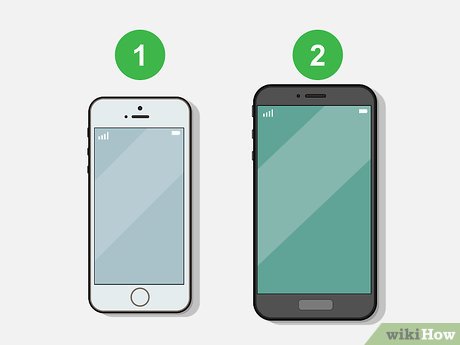
1Get one cellular phone and a second phone to call it with. You’ll need two phones to conduct this experiment. If you have a house phone, you can do it on your own. Otherwise, you’ll need a friend with a cell phone to assist you with the test.XYou’ll need a way to call your cell phone once it’s inside the Faraday cage.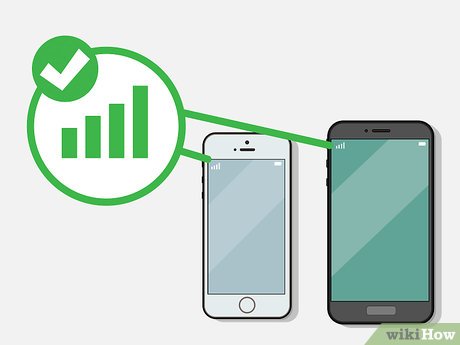
2Make sure both cell phones have good service. Find a location to conduct your test where both phones are receiving a strong cell phone signal so you can be certain that it’s the Faraday cage preventing your phone from receiving a cellular signal, rather than other environmental factors.XIt’s best to conduct this experiment somewhere that you have the best possible service your phone is capable of receiving.
3Have your friend call your phone as a control. Set the ringer on your phone to its loudest setting and wait for it to start ringing. There may be a slight delay, but your phone should start ringing very shortly after your friend calls it.XIf your phone doesn’t receive the call, there’s a problem with it and you won’t be able to use it to test the Faraday cage.If the phone rings, hang up the call.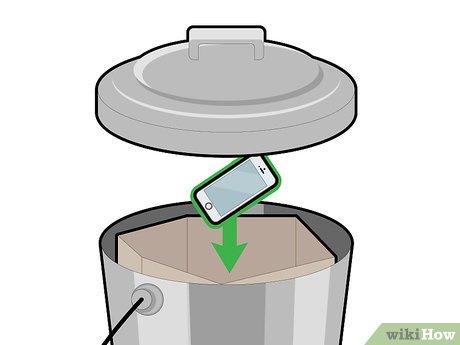
4Place your phone inside the Faraday cage. Open the lid on the Faraday cage you constructed and set the phone down inside. Replace the lid and make sure it’s coming in direct contact with the box or bucket all the way around.XThe phone should not be coming into contact with any metal or foil inside the Faraday cage.
5Ask your friend to dial your number again. This time, you should not hear your phone ringing from inside the Faraday cage. If the phone does not ring, your Faraday cage has successfully redirected the signal around its exterior and prevented it from reaching your phone.XIf your phone does ring, it means there’s a gap somewhere in the Faraday cage that is allowing the signal to pass through.Test your cage more than once to ensure it works.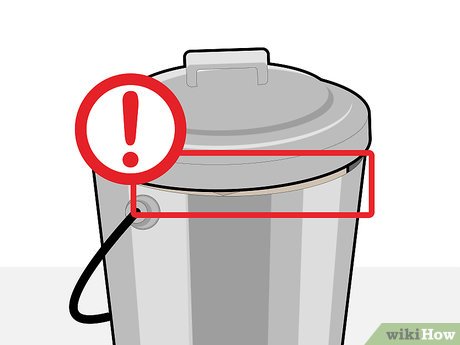
6Look for gaps in your Faraday cage if the call gets through. Any gap in the exterior metal of your Faraday cage could potentially allow an electronic pulse to pass through. Look your Faraday cage over and cover any gaps you spot with aluminum foil or tape. Then test the Faraday cage again.XThis test does not guarantee that your Faraday cage will work, but it offers the easiest way to assess any potential signal leaks.Repeat the test and keep covering gaps until the signal no longer passes through the Faraday cage.








